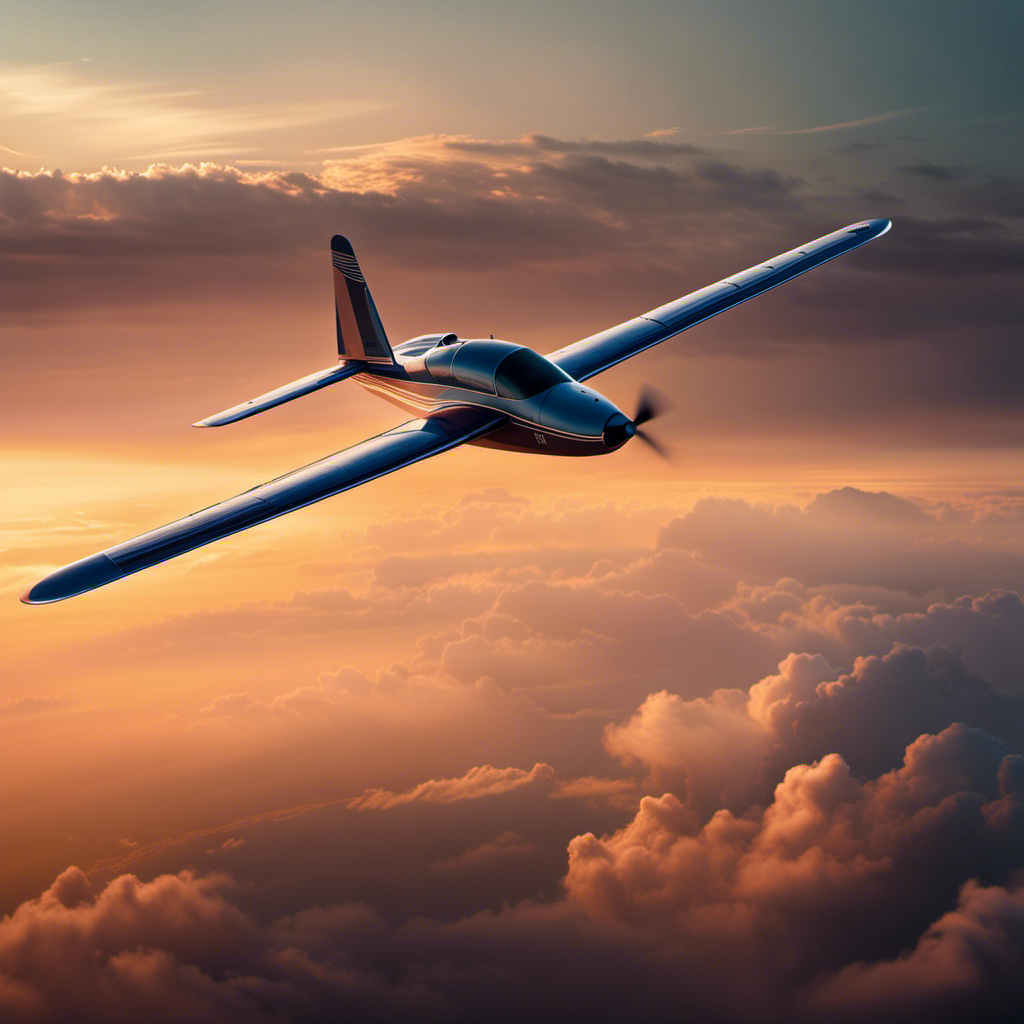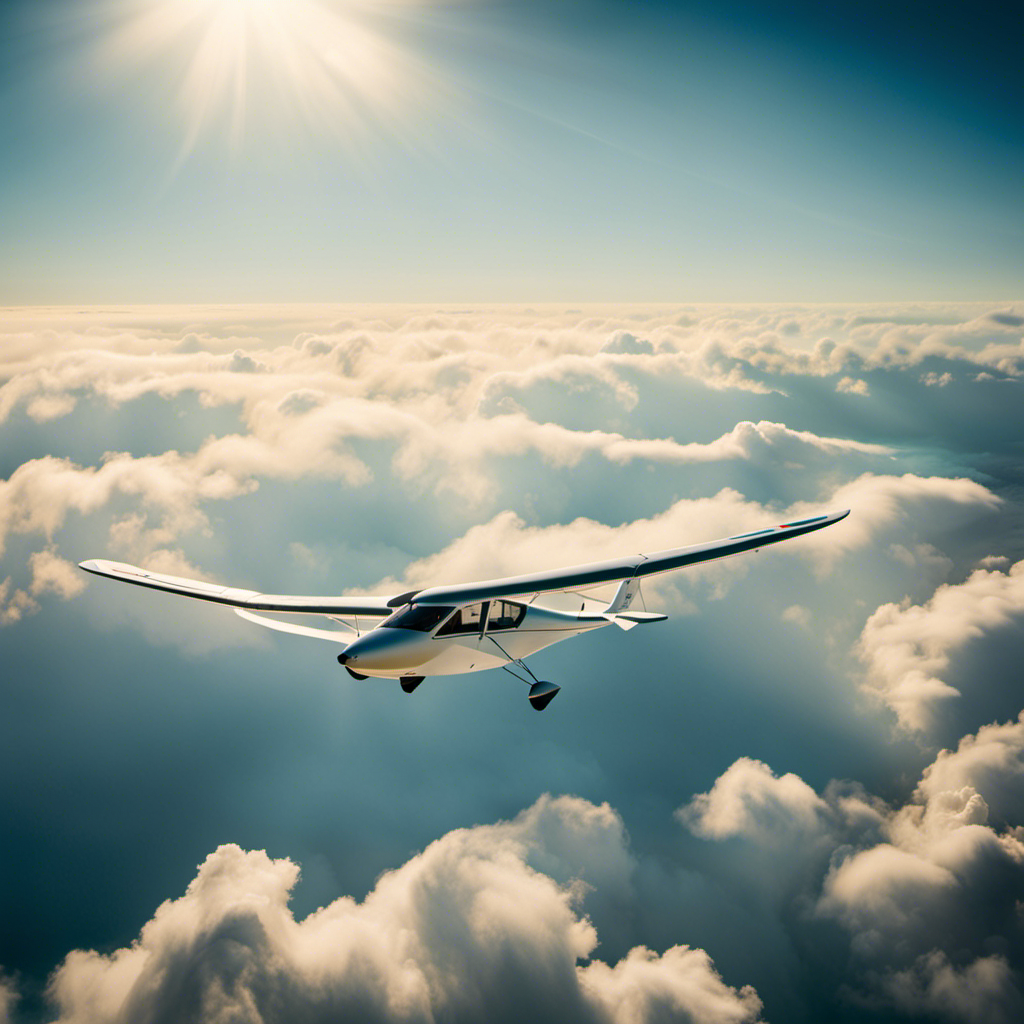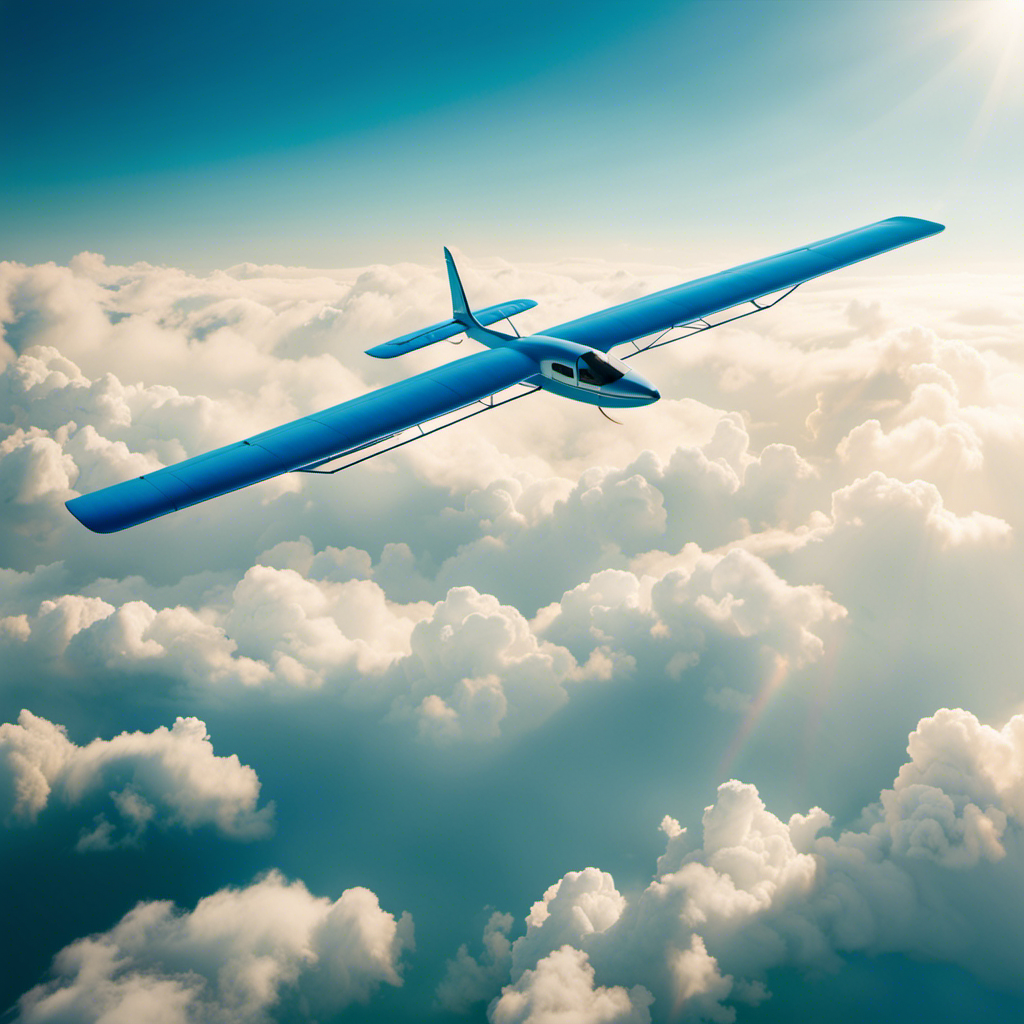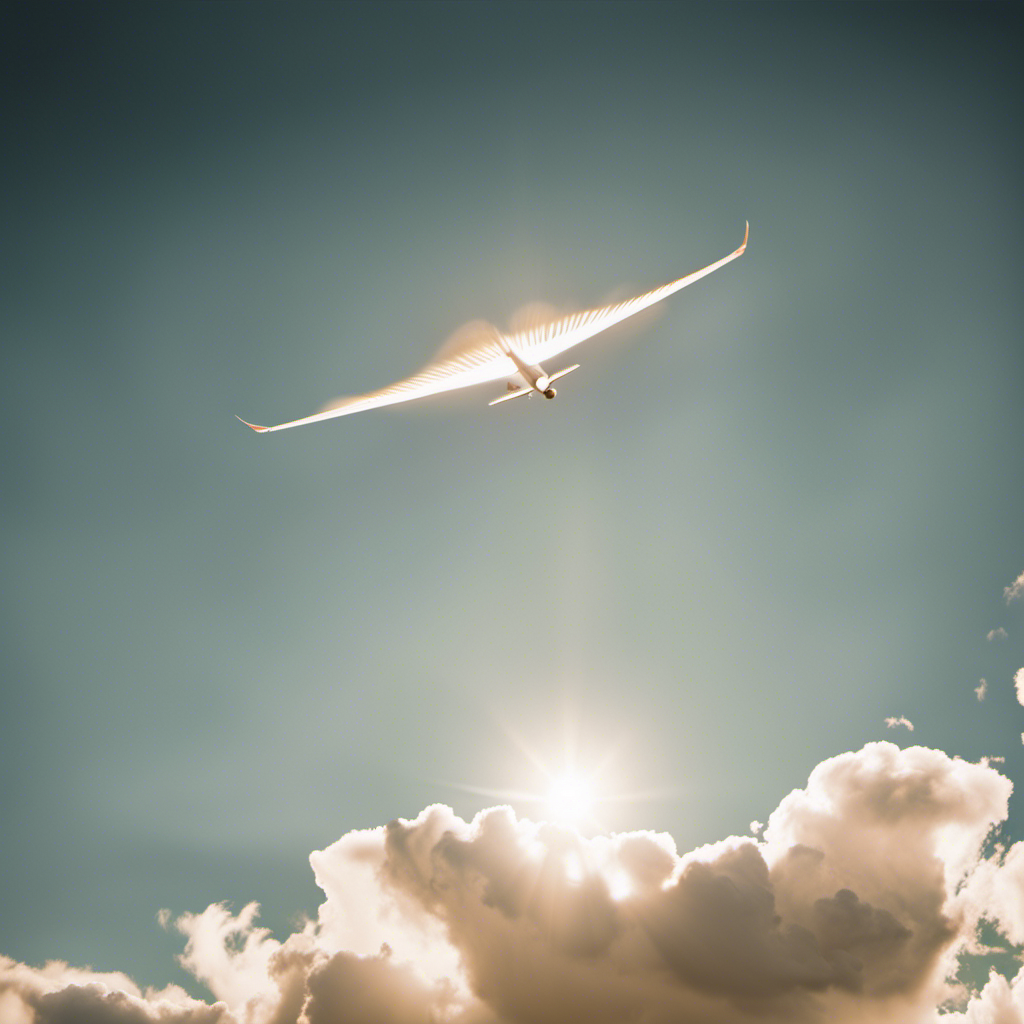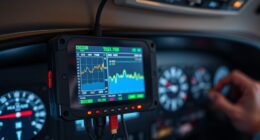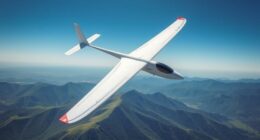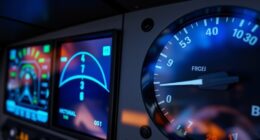Ever since I saw a glider gracefully soaring through the air for the first time, I have been captivated by the idea of obtaining my glider pilot license. The path to achieving this goal involves overcoming challenges and experiencing excitement, but the rewards are beyond measure.
In this article, I will guide you through the intricacies of glider flying, from understanding the different types of gliders to meeting the requirements for a pilot license. So, buckle up and join me on this exhilarating journey beyond the horizon.
Key Takeaways
- Glider flying relies on wind power and control is achieved through weight shifting, control stick, pedals, and wing flaps.
- There are different types of gliders available based on flying goals, such as single-seat gliders for maneuverability and two-seat gliders for stability.
- To obtain a glider pilot license, one must meet age and medical requirements, complete necessary training, and pass a medical examination.
- Progression in glider pilot training involves mastering aerodynamics, weather patterns, and navigation and emergency procedures, and can lead to advanced skills such as thermaling, cross-country flying, and aerobatics.
The Basics of Glider Flying
Now let’s dive into the basics of glider flying and how you can start your journey to earning a glider pilot license.
Glider flying is a unique form of aviation that relies solely on the power of the wind. Unlike powered aircraft, gliders have no engines and are designed to fly without the need for fuel.
To control a glider, you use a combination of weight shifting, using the control stick and pedals, and manipulating the wing flaps. It requires precision and skill to maintain altitude and navigate through the air currents.
As you learn the fundamentals of glider flying, you will develop a deep understanding of aerodynamics and meteorology. With this knowledge, you’ll be well-equipped to understand the different types of gliders and choose the one that suits your flying goals.
Understanding the Different Types of Gliders
When it comes to gliders, there are two main types to consider: single-seat and two-seat gliders.
Single-seat gliders are designed for solo flights, allowing the pilot to have full control and focus on their own experience.
On the other hand, two-seat gliders are meant for training purposes, allowing an instructor and a student to fly together and learn from each other’s experiences.
Another important factor to consider is the difference between high-performance gliders and training gliders.
High-performance gliders are built for advanced pilots who are looking for speed, agility, and longer flights.
Training gliders, on the other hand, are designed with beginner pilots in mind, providing stability, ease of control, and a forgiving flight experience.
Single-seat vs. Two-seat Gliders
If you’re considering getting a glider pilot license, you’ll need to decide between flying single-seat or two-seat gliders.
Single-seat gliders, as the name suggests, are designed for only one pilot. They are typically sleek and lightweight, allowing for greater maneuverability and speed. These gliders are perfect for experienced pilots who enjoy the freedom and challenge of flying solo.
On the other hand, two-seat gliders are built to accommodate both a pilot and a passenger or instructor. They are slightly larger and heavier, providing more stability and comfort. Two-seat gliders are often used for training purposes, allowing beginners to learn from an experienced pilot.
Now, let’s move on to the next section where we will discuss the differences between high-performance and training gliders.
High-performance vs. Training Gliders
To determine which type of glider is right for you, consider the differences between high-performance and training gliders.
High-performance gliders are designed for experienced pilots who seek thrilling flights and want to push the boundaries of their skills. These gliders are built with advanced aerodynamic features, allowing for faster speeds, longer flights, and greater maneuverability.
On the other hand, training gliders are specifically designed for beginners and those who are working towards their pilot license. They are more forgiving and easier to handle, providing a stable and safe learning environment.
Transitioning from a training glider to a high-performance one requires a gradual increase in skill and experience. Understanding the differences between these two types of gliders is essential when considering your goals as a glider pilot and meeting the requirements for a glider pilot license.
Meeting the Requirements for a Glider Pilot License
When it comes to obtaining a glider pilot license, there are certain age and medical requirements that must be met.
Firstly, the minimum age to obtain a student pilot certificate is 14 years old.
Additionally, applicants must pass a medical examination conducted by an aviation medical examiner to ensure they are physically fit to fly.
To start the journey towards becoming a glider pilot, one must first meet these prerequisites and obtain a student pilot certificate.
Age and Medical Requirements
To obtain a glider pilot license, there are certain age and medical requirements that you must meet. Here are the key criteria to keep in mind:
-
Age: You must be at least 16 years old to fly solo and 14 years old to start training.
-
Medical Fitness: A valid medical certificate is required, which can be obtained from an Aviation Medical Examiner (AME).
-
Vision: You must have at least 20/40 vision in each eye, with or without corrective lenses.
-
Hearing: Good hearing is necessary to ensure effective communication with air traffic control and other pilots.
-
General Health: You must be in good overall health to ensure your ability to handle the physical demands of flying a glider.
Meeting these age and medical requirements is the first step towards obtaining a glider pilot license.
Now let’s explore the process of obtaining a student pilot certificate.
Obtaining a Student Pilot Certificate
First, make sure you have completed the necessary training to obtain a student pilot certificate. This certificate is a crucial step towards becoming a glider pilot. To obtain it, you must be at least 16 years old and pass a medical examination. The training includes ground instruction on aerodynamics, weather, regulations, and flight procedures.
Once you have completed the required training, you can apply for the certificate through the Federal Aviation Administration (FAA). This certification allows you to fly solo under the supervision of a certified flight instructor. It is an essential foundation for your journey towards becoming a glider pilot.
Now that you have obtained your student pilot certificate, it’s time to enroll in a glider training program and take your skills to new heights.
Enrolling in a Glider Training Program
To start your journey towards a glider pilot license, the first step is enrolling in a glider training program. This is where you will gain the knowledge and skills necessary to safely operate a glider. The training program typically consists of both ground school and flight training.
During ground school, you will learn about aerodynamics, weather patterns, navigation, and emergency procedures. In the flight training portion, you will have the opportunity to put your knowledge into practice and develop your flying skills under the guidance of a certified flight instructor. It is important to choose a reputable training program that is recognized by aviation authorities.
By enrolling in a glider training program, you are taking the first step towards becoming a competent glider pilot.
Transition: Once you have enrolled in a glider training program, the next phase involves mastering the fundamentals of glider flight.
Mastering the Fundamentals of Glider Flight
When it comes to mastering the fundamentals of glider flight, there are three key areas that every pilot must focus on: pre-flight inspections and safety checks, takeoff and landing techniques, and in-flight maneuvers and navigation.
Before every flight, it is crucial to thoroughly inspect the glider and ensure that it is in optimal condition.
During takeoff and landing, precise techniques must be employed to ensure a smooth and safe transition between the air and the ground.
Once in the air, pilots must be skilled in executing various maneuvers and navigating their glider with precision and accuracy.
Pre-flight Inspections and Safety Checks
Before hopping into the glider, make sure you perform all necessary pre-flight inspections and safety checks. It is crucial to ensure that the glider is in optimal condition for a safe and successful flight. Here are the steps to follow:
- Check the overall condition of the glider, inspecting for any visible damage or wear.
- Verify the control surfaces, such as the ailerons and elevators, move freely and smoothly.
- Examine the canopy, ensuring it is securely latched and in good condition.
- Inspect the cockpit instruments, confirming they are functioning properly.
- Lastly, check the parachute and emergency equipment to ensure they are ready for use.
By meticulously completing these inspections, you can mitigate potential risks and ensure a safe flight.
Now, let’s move on to discussing the essential takeoff and landing techniques necessary for glider flying.
Takeoff and Landing Techniques
After completing all pre-flight inspections and safety checks, it is time to focus on the crucial aspects of takeoff and landing techniques.
As a glider pilot, I must possess a thorough understanding of these procedures to ensure a safe and successful flight.
During takeoff, I carefully position the glider into the wind, utilizing the proper controls to achieve the necessary speed and lift. Once airborne, I maintain a steady climb, adjusting the glider’s attitude and monitoring the instruments to ensure optimal performance.
Landing requires precise judgment and skill, as I navigate the glider towards the designated landing spot. I must evaluate wind conditions, adjust the glide slope, and execute a smooth touchdown, using the appropriate techniques to avoid any mishaps.
Mastering these takeoff and landing techniques sets the foundation for the next phase of my training: in-flight maneuvers and navigation.
In-flight Maneuvers and Navigation
To navigate through the skies and perform various maneuvers, you’ll rely on your knowledge of in-flight techniques and navigation skills.
As a glider pilot, it is crucial to understand the principles of flight and how to control your aircraft effectively. In-flight maneuvers involve executing turns, climbs, descents, and stalls with precision and finesse. You must master the art of coordinating your controls to maintain balance and stability throughout each maneuver.
Additionally, navigation skills are essential to ensure you stay on course and reach your intended destinations. You’ll learn how to read aviation charts, use radio navigation aids, and calculate wind corrections.
Building Flight Experience and Solo Flying
Start building your flight experience by logging hours in the cockpit and practicing solo flying. This is a crucial step in your journey to becoming a glider pilot. Here are three key aspects to focus on during this phase:
-
Cockpit Hours: Spend as much time as possible in the cockpit to familiarize yourself with the controls, instruments, and handling of the glider. This hands-on experience will help you develop a solid foundation of flight skills.
-
Solo Flying: Once you have gained enough proficiency, it’s time to take to the skies on your own. Solo flying allows you to apply what you have learned and build confidence in your abilities. It is a thrilling experience that will prepare you for more advanced maneuvers.
-
Flight Planning: Use this time to improve your flight planning skills. Learn how to assess weather conditions, choose appropriate flight routes, and calculate performance parameters. This knowledge will be invaluable as you progress towards more challenging flights.
Passing the Glider Pilot Knowledge Test
After gaining valuable flight experience and mastering the art of solo flying, the next step on my path to a glider pilot license was to pass the Glider Pilot Knowledge Test.
This test ensures that I have a strong understanding of a wide range of topics, from aerodynamics and weather to navigation and emergency procedures. To prepare for this comprehensive exam, I immersed myself in studying various resources and attending ground school classes.
The test itself consisted of multiple-choice questions that assessed my knowledge and decision-making abilities. It was a challenging but rewarding experience, as passing this test brought me one step closer to achieving my dream of becoming a licensed glider pilot.
With the knowledge test successfully behind me, I was ready to move on to the next phase: completing the practical flight test.
Completing the Practical Flight Test
Once I had passed the Glider Pilot Knowledge Test, I began preparing for the practical flight test. This test would determine whether I had the necessary skills and knowledge to safely operate a glider.
Here are three important aspects of the practical flight test:
-
Pre-flight Inspection: Before taking off, I had to meticulously inspect the glider, ensuring that everything was in proper working order. This included checking the control surfaces, instruments, and safety equipment.
-
Flight Maneuvers: During the test, I had to demonstrate various flight maneuvers such as turns, stalls, and landings. These maneuvers tested my ability to control the glider in different situations and under different conditions.
-
Emergency Procedures: I also had to showcase my knowledge of emergency procedures, including how to handle situations such as a rope break or an unexpected loss of altitude.
Successfully completing the practical flight test was a crucial step towards obtaining my glider pilot license, as it demonstrated my proficiency in flying a glider.
Obtaining Your Glider Pilot License
To obtain your glider pilot license, you’ll need to pass both the Glider Pilot Knowledge Test and the practical flight test.
The Glider Pilot Knowledge Test assesses your understanding of various topics such as aerodynamics, weather, navigation, and regulations. It is designed to ensure that you have the necessary knowledge to operate a glider safely and efficiently.
The practical flight test evaluates your ability to apply that knowledge in real-world scenarios. You’ll be assessed on your flight planning, pre-flight inspection, takeoff, flight maneuvers, and landing. Successfully completing both tests demonstrates your competence as a glider pilot.
Once you have obtained your license, there are numerous opportunities for continuing education and advancing your skills in areas such as cross-country flying, aerobatics, and competition flying. These additional training options allow you to further expand your knowledge and proficiency as a glider pilot.
Continuing Education and Advancing Your Skills
There are numerous opportunities for glider pilots to continue their education and advance their skills. As a passionate glider pilot myself, I have found that ongoing education is crucial in this field.
Here are four ways in which glider pilots can further enhance their knowledge and expertise:
-
Attending advanced training courses: These courses provide in-depth knowledge on topics such as meteorology, aerodynamics, and navigation, allowing pilots to make safer and more informed decisions while flying.
-
Participating in cross-country flights: These challenging flights push pilots to their limits, honing their navigation skills and decision-making abilities in unfamiliar terrains.
-
Joining glider clubs and associations: Being part of a community of like-minded individuals provides opportunities for learning from experienced pilots, sharing experiences, and staying updated with the latest advancements in the field.
-
Volunteering as a flight instructor: Teaching others not only reinforces one’s own knowledge but also helps develop communication and leadership skills while imparting valuable insights to aspiring pilots.
Frequently Asked Questions
How much does it cost to obtain a glider pilot license?
Obtaining a glider pilot license can cost around $5,000 to $10,000. This includes training fees, aircraft rental, exams, medical certificates, and memberships. The total cost may vary depending on location and individual progress.
Are there any age restrictions for getting a glider pilot license?
There are age restrictions for obtaining a glider pilot license. In most countries, you need to be at least 16 years old to begin training, and 17 years old to obtain the license.
Can I use my glider pilot license to fly other types of aircraft?
Yes, a glider pilot license allows me to fly other types of aircraft. However, additional training and certifications may be required depending on the specific aircraft I want to fly.
Are there any medical requirements to obtain a glider pilot license?
There are no specific medical requirements to obtain a glider pilot license. However, it is still important to be in good health and have a certain level of physical fitness to ensure safe operation of the aircraft.
How long does it typically take to complete a glider training program and obtain a license?
It typically takes several months to complete a glider training program and obtain a license. This involves learning theory, practicing flight maneuvers, and passing written and practical exams.
Conclusion
As I conclude my journey towards obtaining a Glider Pilot License, I am filled with a sense of accomplishment and awe.
Gliding through the sky, feeling the wind on my face and the thrill of soaring, has been a breathtaking experience.
Mastering the fundamentals of glider flight and passing the knowledge test were challenging yet rewarding.
Now, with my license in hand, I am ready to continue my education and advance my skills in this incredible world of aviation.
Embark on this exhilarating adventure and let the winds guide you beyond the horizon!
